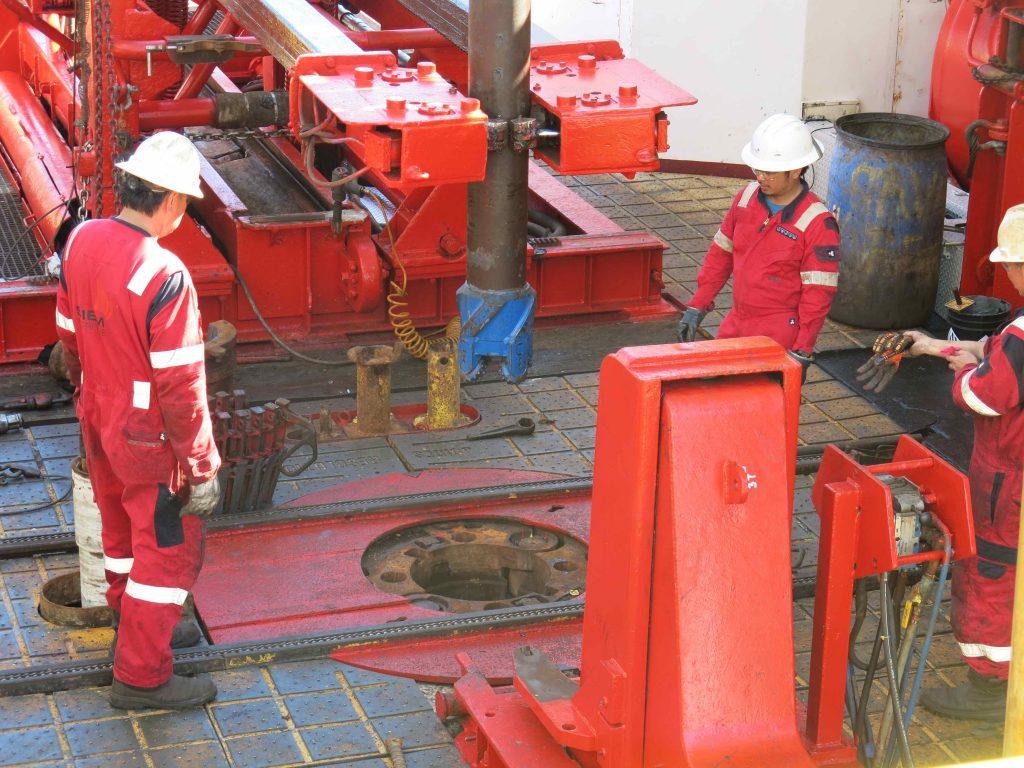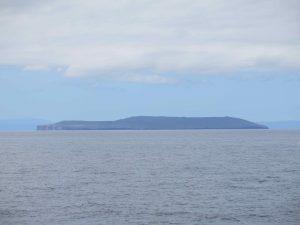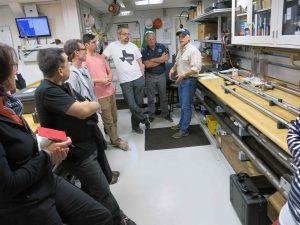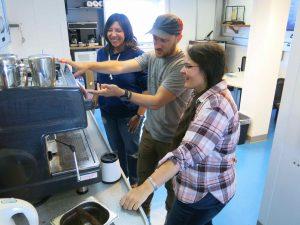
In Guaymas Basin, Drilling!

It is noon and the JR has arrived in Guaymas Basin, in deep water above the flanks of the active spreading center. The seafloor here is hydrothermally active and the enormous Ringvent site, ca. 800 meters in diameter, lies 1,700 meters below. Isla Tortuga, a volcanic island with a large caldera in its center, appears nearby. Behind Isla Tortuga, larger volcanoes rise on the more distant Baja California coast; they are dormant for the moment but their ash layers can be found all over this landscape of desert and sea.
The JR moves a little further north to our first drilling site, GUAYM-01 or U1545 in consecutive IODP numbering. Here, a 500- to 600-meter thick package of organic-rich marine sediments has accumulated over time without volcanic basalt layers (the technical term is “sill”); this site is therefore the non-hydrothermal standard, the seafloor how it would normally appear if it was not disturbed by volcanic eruptions and emplacement of hot lava sills. “Undisturbed” has to be taken with a grain of salt; after 540 meters a deeply buried sill is expected even here. By 3:00 p.m., the JR is in place and drilling operations begin. The JR drilling crew is assembling the drill string piece by piece, visible as the shiny tube dangling under the derrick.
The drill bit, in deep blue in the top picture, is mounted on the bottom of the drill string; its rotating teeth will penetrate hundreds of meters of seafloor sediment.

And down it goes, all the way to the bottom of Guaymas Basin and into the seafloor sediments. Drill pipe assembly and the actual drilling process take time; the first sediment cores will appear around 3:00 a.m., in deepest night. But I guess many people will stay up to watch the first core arriving on deck!
The last calm afternoon of the cruise is used for introducing new hardware: the Kuster fluid sampler is laid out for inspection on the bench to the right, a long hollow metal cylinder with pressure valves that is lowered into a deep borehole and collects hot hydrothermal fluids directly from its bottom. Some seawater and drilling fluid will inevitably come in as well, but we are willing to take the risk. Give scientists a promising opportunity to play with fire and they will take it!

Science is all fine and well, but life continues. Christophe Galerne, whom we have already met when he was learning how to handle the espresso machine on the bridge deck, is now instructing the next academic generation in preparing hydrothermal coffee extracts, astrobiologist Manet Peña from the Autonomous University of Baja California and palaeomagnetics specialist Myriam Kars from Japan’s premier marine research center, JAMSTEC. Staying up until 3 a.m. requires some biochemical help…
This blog post first appeared on Sep. 26 on my daily blog of EXP385. Make sure to go to expedition385.wordpress.com to read the latest updates of this expedition!
Thanks for sharing this with me! It’s a great way for an almost ninety-year-old to keep learning more of this wonderful world on which we live. Have fun!